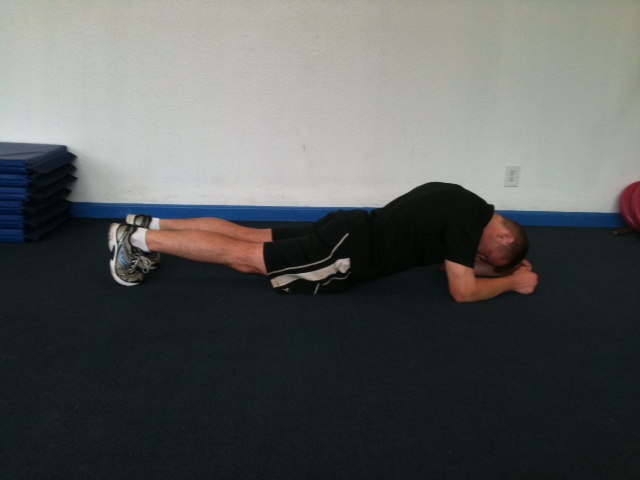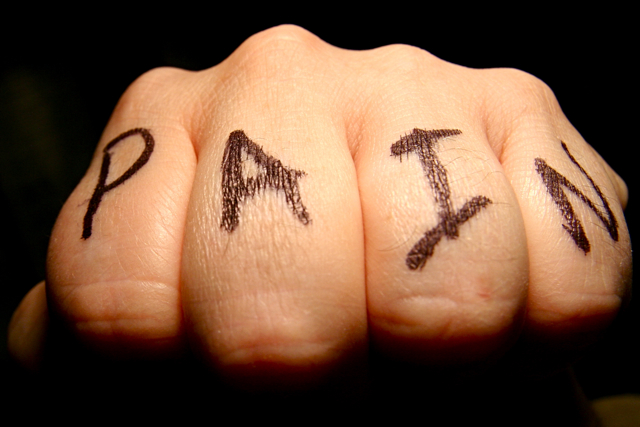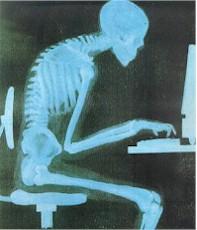There are many root causes of low back pain and discomfort, and there are many people who’s day to day lives are affected by it.
In my neck of the woods – Strength & Conditioning – the culprit(s) can often be displayed on the weight room floor. Lifters who routinely default into movement patterns that place them in (end-range) LOADED spinal flexion or extension are often playing with fire when it comes to their low back health and performance.
NOTE: this isn’t to say that repeated flexion/extension is always the root cause.
1) There’s a stark contrast between flexion/extension and LOADED flexion/extension. Many people have been programmed to think that all flexion/extension of the spine is bad. It’s not. The spine is meant to move, albeit under the assumption that one can do so without significant compensation patterns (relative stiffness), limitations in mobility, and with appropriate use of both passive (ligaments, labrums, and tendons, oh my) and active (muscles) restraints.
It’s when people start placing the spine under load in ranges of motion they can’t control – often in the name of social media glory – that bad things end up happening.
2) However, there are plenty of examples of lifters (mostly elite level, which is an important point) who have been utilizing techniques many fitness pros would deem incendiary with regards to the increased likelihood of spines all over the world resembling a game of Jenga.
A great example is a piece Greg Nuckols wrote HERE, explaining the benefits – biomechanically speaking – of a rounded back deadlift.
But back pain – specifically low back pain – can strike at any moment. I’ve heard stories of people hurting their back during training of course. But I have also, and I think many of you reading will nod your head in agreement, have heard stories of people messing up their back while bending over to pick up a pencil or to tie their shoes.
Or while fighting a pack of ninjas (hey, it can happen).
In pretty much all cases it comes down to one of two scenarios going down:
1. Ninjas attack.A one-time blunt trauma. Think: spine buckling under load, car accident, falling off a ladder.
2. A repetitive aberrant motor pattern. Think: tissue creep into sustained spinal flexion for hours on end at work.
Dr. Stuart McGill and his extensive research on spinal biomechanics has been the “go to” resource for many people – including myself – to help guide the assessment process and to attempt to figure out the root cause of most people’s low back pain.
A term he uses often is “Spinal Hygiene.”

It behooves us as health and fitness professionals to use the assessment as a window or opportunity to “audit” our client’s and athlete’s movement and to see what exacerbates their low back pain.
From McGill’s book Back Mechanic:
“Our approach in identifying the cause of pain during an assessment is to intentionally provoke it. Provocative pain testing is essential and irreplaceable when it comes to determining which postures, motions, and loads trigger and amplify pain and which ones offer pain-free movement alternatives.”
People who have more pain and discomfort in flexion (slouching, sitting, bending over to tie shoes) are often deemed as flexion intolerant. Moreover, people who have more pain and discomfort in extension (standing for long periods of time, bending backwards, excessive “arching” in training), are often deemed as extension intolerant.
Ironically, in both scenarios, people will find relief in the same postures that are “feeding” the dysfunction and their symptoms.
What’s the Fix?
Funnily enough, pretty much everything works. There are any number of methodologies and protocols in the physical therapy world that have worked and have helped get people out of low back pain.
It’s almost as if the appropriate response to “how do you fix low back pain?” is “the shit if I know? Everything has been shown to work at some point or another.”
Active Release Therapy, Graston, positional breathing, stretching, mobility work, rest, sticking needles in whereeverthefuck….it’s all been shown to work.

I’ve had numerous conversations with manual therapists on the topic and the ones who tend to “get it” and elicit the best results are the ones who take a more diverse or eclectic approach.
They’ll use a variety of modalities to best fit the needs of the individual.
That said, I’m a fan of directing people towards therapists who take a more “active” approach as opposed to a “passive” approach.
Both can work and both have a time and place. However one approach is less apt to make me want to toss my face into an ax.
Passive Approach = Ultra sound, electric stimulation, etc. This approach treats the symptoms, focuses on instant relief, and not necessarily addresses the root cause(s).
Active Approach = Is more hands on and more “stuff” is happening. Practitioners who fall on this side of the fence tend to focus more on the root cause – poor movement quality, positioning, muscle weakness, mobility restrictions – and work in concert with the patient/athlete to educate them on how to prevent future setbacks.
Above all, an active approach is about finding and engraining a neutral spinal position, and finding pain-free movement.
I think by now you know my preference.
Tony, Shut-Up, What’s the “Forgotten” Cause of Low Back Pain?
Well, to say it’s “forgotten” is a bit sensationalistic. My bad.
We tend to solely focus on either flexion or extension intolerance…and granted those are the two biggies.
However, have you ever had someone come in and pass those “screens” with flying colors only to complain of back pain or discomfort when he or she rolls over in bed, rotates, or maybe experiences an ouchie when they sneeze?
What’s up with that? And bless you.
Spinal Instability – That’s What’s Up.
Instability can rear it’s ugly head with flexion/extension based issues too, but it becomes more prevalent when rotation is added to the mix.
The body doesn’t operate in one plane of motion, and it’s when people meander out of the sagittal plane and venture into frontal and/or transverse plane movements, when they begin to get into trouble.1
The muscles that provide intersegmental stability to the spine may be under-active and may need some extra TLC.
I’ve worked with people who could crush a set of barbell squats (they handle compression and shear loading well), but would complain of l0w-back pain whenever they did anything that required rotation.
The fix is still going to be helping them find and maintain spinal neutral – I don’t feel this is ever not going to be a thing. Kind of like too much money in politics or LOLcats.
In addition, gaining motion from the right areas – hips, t-spine, for example – will also bode well.
However, I’d like to offer some insight on what exercises might be part of the repertoire in terms of “pain free movement” when spine instability is a factor.2
The Stuff Most People Will Skip (It’s Okay, I Won’t Judge You)
One word: planks.
Dr. McGill has stressed time and time again that improving spinal endurance (and hence, stability) is paramount when dealing with back pain. They key, though, is performing them in ideal positions.
I chuckle whenever someone brags about holding a 5-minute plank. When in fact all they’re really doing is hanging onto their spine….literally.

This does no one any favors.3
RKC Plank.
1. It’s a bonafide way to help people gain a better understanding and appreciation for creating full-body tension.
2. I like cueing people to start in a little more (unloaded) flexion, so that by the end they’re residing in a neutral position anyways.
3. When performed as described in the video below, 10s will make you hate life.
To up the ante you can also incorporate 3-Point Planks (where you take away a base of support, either an arm or a leg, and hold for time) or Prone Plank Arm Marches:
NOTE TO SELF: do more of these.4
You can also incorporate Wall (Plank) Transitions where the objective is to cue people to keep the torso locked in place. Motion shouldn’t come from the lumbar spine then mid-back. Everything should move simultaneously, as follows:
Deadbugs
I’m a huge fan of deadbugs. When performed RIGHT, they’re an amazing exercise that will undoubtedly help build core and spine strength/stability.
A key component to the effectiveness of a deadbug is the FULL-EXHALE (check out link above). However, one variation I’ve been using lately is the Wall Press Deadbug (for higher reps).
https://www.youtube.com/watch?v=gmtsGHk34C0
Here the objective is to engage anterior core (pressing into the wall), to breath normally, and then to perform a high(er) rep set (10-15/leg) making sure motion comes from the hips and NOT the lower back.
If you want to build stability (and endurance) this is a doozy.
Stuff People Are More Likely To Do (Because It Involves Lifting Things)
1. Offset Loaded Lifts
This is an untapped, often overlooked component to back health and performance. Offset or asymmetrical loaded exercises are a fantastic way to train spinal stability and challenge the core musculature.
By holding a dumbbell on one side, for example, you have work that much harder to maintain an upright posture and resist rotary force:
Likewise, with offset presses, the core must fire to prevent you from falling off the bench. Unless you fall off because you’re drunk. If that’s the case, go home.
And we don’t have to limit ourselves to dumbbells, either. We can use barbells too.
2. Shovel Deadlift
3. Farmer Carries
Farmer carries – especially 1-arm variations – can be seen in the same light. The offset nature is a wonderful way to challenge the body to resist rotation (rotary force) and to help build more spinal stability.
4. 1-Legged Anti-Rotation Scoop Toss
Another option is to perform anti-rotation drills such as the 1-Legged Anti-Rotation Scoop Toss. As you can see from my un-edited video below….it’s tougher than it sounds.
5. Anti-Rotation Press
A bit higher on the advanced exercise ladder, the Anti-Rotation Press is another great drill to help hone in on increased core strength and spinal stability. To make it easier, use a longer stride stance; to make it harder go narrower.
This Is Not an End-All-Be-All List
But a good conversation stimulator for many people dealing with low-back pain nonetheless. Have you got own ideas or approaches to share? Please chime in below or on Facebook!





 properly, or even how to stand up from a chair.
properly, or even how to stand up from a chair.




